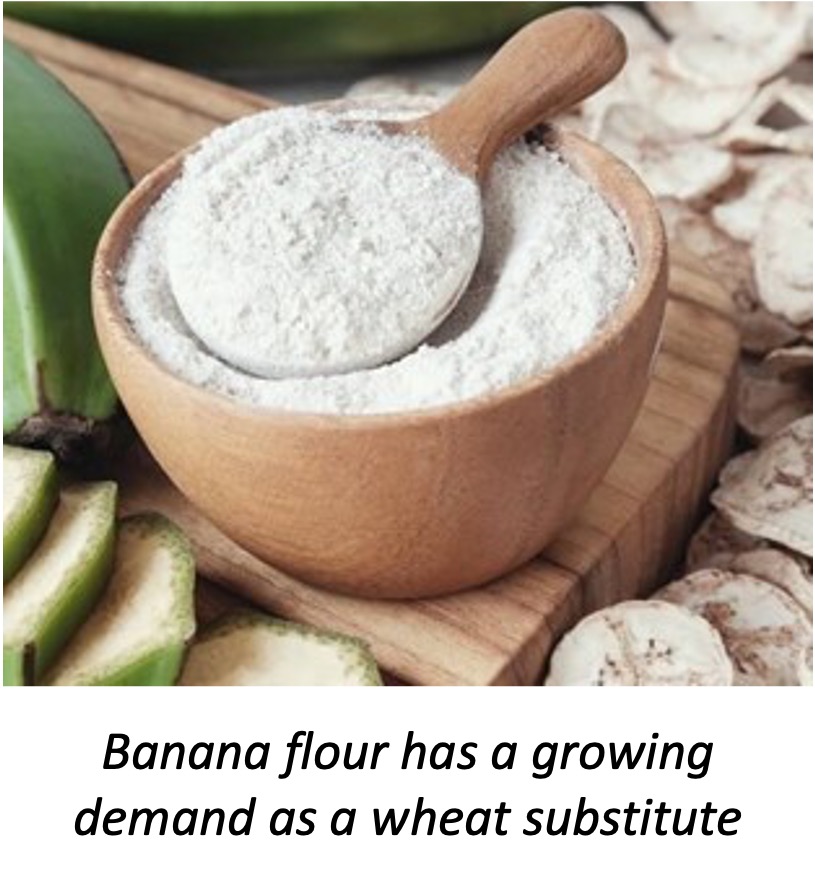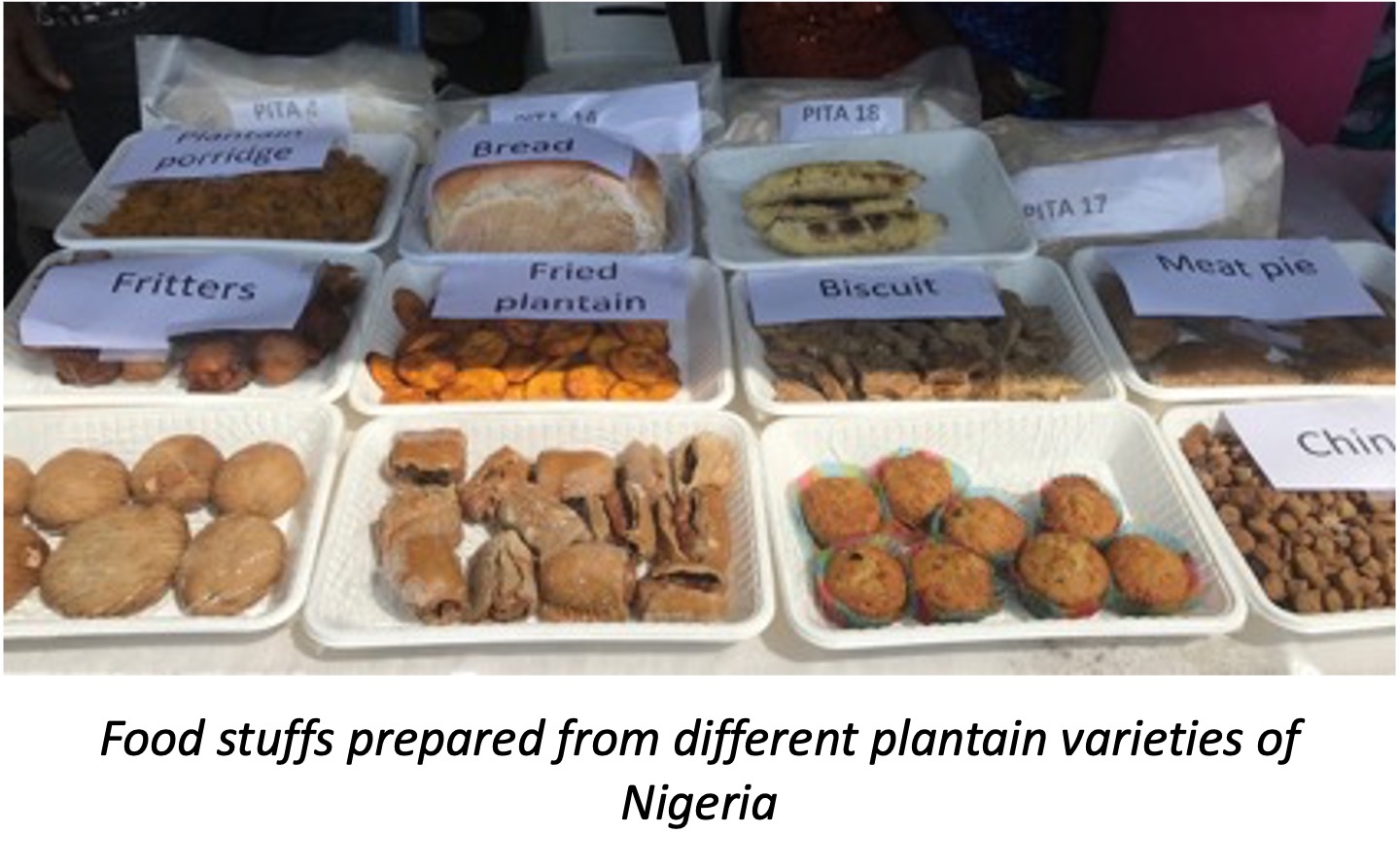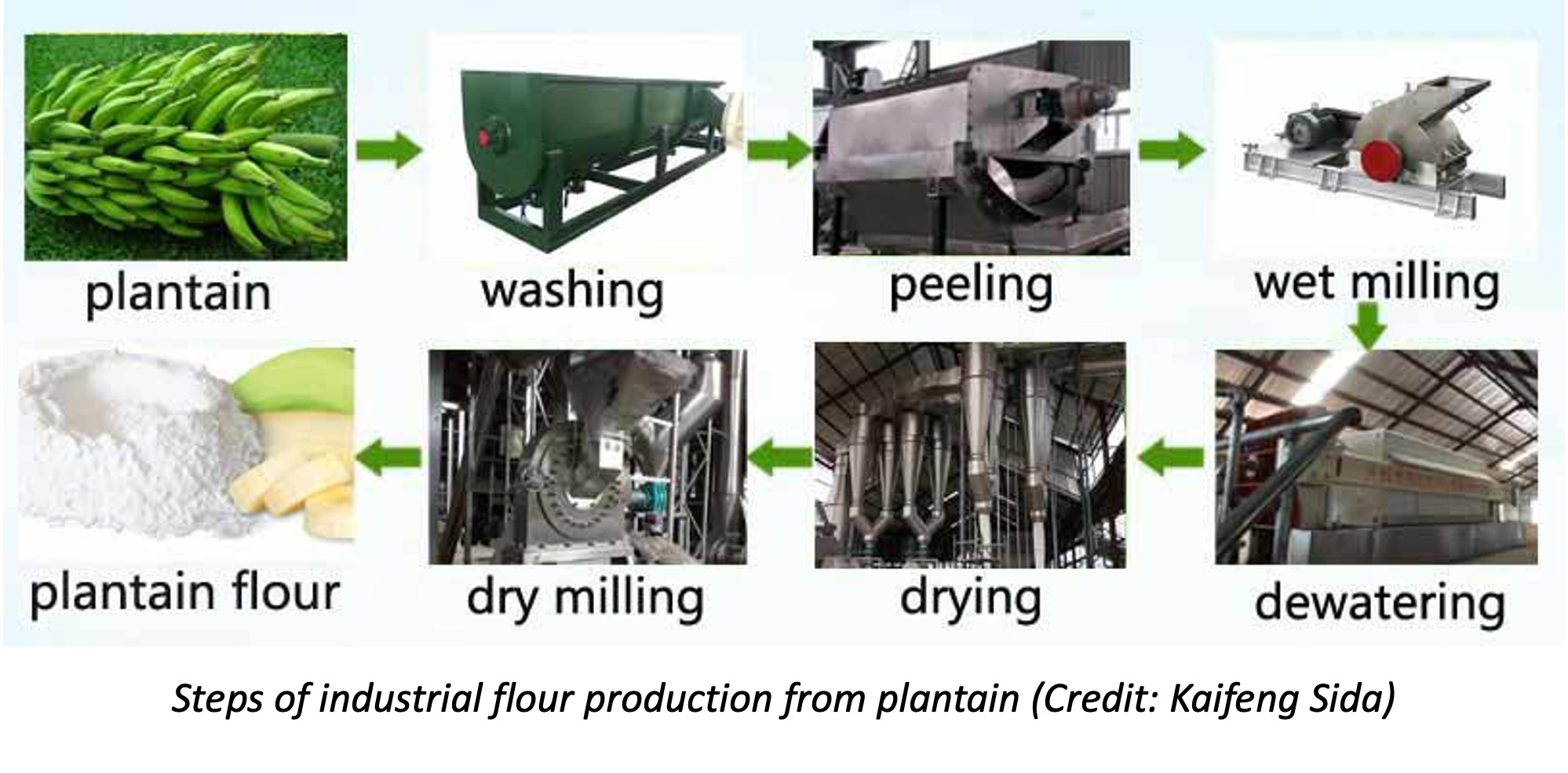Value-added Processing of Bananas and Plantain
Summary
Plantains and banana offer multipurpose processing options and are a great source of starch and energy. A wide range of products can be made from the unripe and ripe fruits, particularly puree for beverages and syrups, flour for baking and fried and dried slices for chips. Both ripe and unripe bananas and plantains are typically peeled and sliced before processing. Sun drying is the most widespread technique where climate conditions permit, but oven drying is also practices. Banana and plantain products are increasingly manufactured at an industrial scale. Most production is made from green bananas and plantains because ripe bananas are often damaged during transport. Banana flour is produced from unripe fruit, and banana powder from ripe fruit, and both products have rapidly expanding markets due to their nutritional and medicinal benefits.
About the Solution
A wide variety of food products may be processed from both ripe and unripe fruits of banana and plantain. Green banana and plantain are peeled, cut or chopped, dried and ground to produce a useful baking flour. This flour contains up to 80% starch that may be extracted into purer forms used in cosmetics. Cut green banana are fried into savory snacks. Ripe bananas are peeled for fresh fruit consumption and industrial processing. Pulped banana produces a puree for use in drinking beverages and dairy products such as ice cream and yoghurt. Sliced banana is dried and ground into banana powder or fried into sweet snacks. Banana and plantain is rich in dietary fiber, potassium, phosphorus, calcium, vitamins A and C, crude fat, carotenoids and other nutritious compounds. Traditional flour processing results in a brownish color that is unattractive for baking, but blanching or soaking in sodium metabisulfite or organic acids counteracts this problem.
Flour from unripe plantain and banana can be incorporated into pasta, noodles, infant foods, and bakery products as partial substitute for wheat, or for making gluten-free food products. Expertise and testing are needed to align the specific cultivars and growing conditions with final product. For instance, the green unripe French plantain Red Essong is best as a flour for the baking industry since it doesn’t alter the color of finished products unlike for the False Horn Mbouroukou 3 and PITA hybrids. Untreated flour of the plantain hybrid PITA 27 can be used in food products where high thickening is required, whereas treated flours from False Horn Mbouroukou 3 and hybrid PITA 14 are better suited for foods that require less thickening.
The highest levels of amylose, water-holding capacity , and oil-holding capacity are recorded in unripe flours and the highest content of resistant starch in acid-treated flour. The highest level of total phenolic, carotenoid contents, and browning index is obtained in flour after pre-blanching. Crude protein content in flour from green dessert and plantain measures between 3.4% and 4.9%. The amylose and amylopectin content of plantain flours varies largely between varieties from 23% to 43%. Crude fat content ranges from 0.17 to 0.61% in green plantain flours whereas EAHB have no or very low fat content. Hybrid plantain and banana from the ABB group contain more than 40% resistant starch whereas this is lower for true plantains from the AAB group and East-African Highland Banana Cavendish and Gros Michel banana from the AAA group. Plantain flours have a low available starch content which form an issue for achieving dietary requirements of digestible carbohydrates.
The flour of unripe plantain and banana is prepared by cutting the peeled fruit into slices and air drying for 1-3 days before milling. Before peeling, it is critical that the bunch or fingers are thoroughly washed to remove the sand and impurities. Peeling can be done by hand or with an industrial scale automated machine. At industrial scale the fruit is usually made into a smooth mash by wet milling that is dewatered using a press filter and flash dryer. Dried chips or press cake is then milled and sieved to obtain a fine high-quality flour. This process requires 8–10 kg of raw green bananas to produce 1 kg of dried banana flour. Banana puree is prepared from ripe bananas after washing and peeling. Bananas are blanched with steam or boiling water to a temperature of 93°C, requiring about 15 minutes. Blanched bananas are then cooled and passed through a blender. There are two different methods for making banana chips. One of these is to deep fry thin slices of banana in hot oil, in the same way as potato chips or crisps. The other is to dry slices of banana, either in the sun or using a solar or artificial dryer.
Commercialization
Commercially available
Solution Images
Institutions




